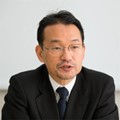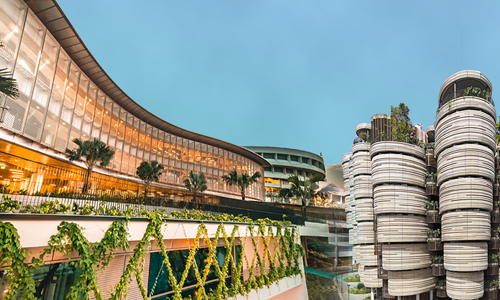Introduction
This course focuses on the space industry and aims to provide electrical engineers with a comprehensive understanding of satellite technology. It is part of an initiative to foster the development of Singapore's space sector by offering professional learning and upskilling opportunities to individuals currently working or aspiring to work in this field. The course covers a range of topics including communication systems, satellite power systems, attitude determination and control systems, as well as satellite operation, command, and data handling.
The global space industry is projected to expand to a market size of US$1 trillion by 2040, compared to less than US$400 billion in 2020. This growth is primarily driven by the emerging "new space" industry, which emphasizes space-based connectivity and the analysis of satellite data for information purposes. It contributes significantly to the digital transformation of various terrestrial economies. This course aims to provide professional training to prepare individuals for the digital economy generated by the space industry.
Throughout the course, learners will gain insights into the role of the space sector in the digital economy, learn about the essential infrastructure for satellite-based applications, understand the functioning of satellite subsystems, explore the reasoning behind mission design, and acquire knowledge of systems engineering approaches to satellite development. By the end of the course, learners will be equipped with the necessary skills to contribute to the satellite industry and apply satellite technology in their future careers.
Objectives
By the end of this course, the learners should be able to:
Understand the role of space sector in the digital economy
Explain the necessary space and ground infrastructure for satellite-based digital applications
Explain how each satellite subsystem works to achieve the mission success
Explain the rationales behind space mission design
Discuss systems engineering approaches to satellite development
Outline
The course is made of the following 4 lectures.
Communication system
Satellite Power system
Attitude Determination and Control system
Satellite operation, command and data handling
Who should attend
Fees and Funding
Standard Course Fee: S$1,512 (Classroom Delivery mode), S$1,998 (Online Delivery mode)
Classroom Delivery mode
SSG Funding Support | Course fee payable after SSG funding, if eligible under various schemes | ||
Fee BEFORE funding & GST | Fee AFTER funding & 8% GST | ||
Singapore Citizens (SCs) and Permanent Residents (PRs) (Up to 70% funding) | S$1,400.00 | S$453.60 | |
Enhanced Training Support for SMEs (ETSS) | S$173.60 | ||
SCs aged ≥ 40 years old | |||
Online Delivery mode
SSG Funding Support | Course fee payable after SSG funding, if eligible under various schemes | ||
Fee BEFORE funding & GST | Fee AFTER funding & 8% GST | ||
Singapore Citizens (SCs) and Permanent Residents (PRs) (Up to 70% funding) | S$1,850.00 | S$599.40 | |
Enhanced Training Support for SMEs (ETSS) | S$229.40 | ||
SCs aged ≥ 40 years old | |||
- All fees stated are inclusive of 8% GST.
- NTU/NIE alumni may utilise their $1,600 Alumni Course Credits. Click here for more information.
Trainers

Cho Mengu (Visiting Professor)
Prof. Mengu Cho received the B.E. and M.E. degrees from the Department of Aeronautics, University of Tokyo, Tokyo, Japan, in 1985 and 1987, respectively, and the Ph.D. degree from the Department of Aeronautics and Astronautics, Massachusetts Institute of Technology, Cambridge, MA, USA, in 1992.
From 1992 to 1995, he was a Research Associate with Kobe University, Kobe, Japan. From 1995 to 1996, he was a Teaching Associate with International Space University, France. Since 1996, he had been with the Department of Electrical Engineering, Kyushu Institute of Technology (Kyutech), Japan, where he was an Assistant Professor in 1996 and Associate Professor in 1997. Since 2004, He has been a Professor and also served as the Director of the Laboratory of Spacecraft Environment Interaction Engineering (LaSEINE) of Kyutech until 2022. He has been with the Department of Space Systems Engineering since 2018. LaSEINE is a research group made of more than 10 academic staff and 30 graduate students.
His research interest includes lean satellites (as known as small/micro/nano/pico satellites) . He has authored or co-authored more than 200 papers in peer reviewed journals. He contributed one chapter in a text book, “CubeSat Handbook: From Mission Design to Operations”. He served as a project lead of a standardization project for ISO-19683, “Space systems — Design qualification and acceptance tests of small spacecraft and units” that was published in 2017. Since 2012, he has supervised more 10 Kyutech satellite projects, launching 23 satellites into orbit, which is the largest number among academic institutions in the world. He organized various international conferences, including International Workshop on Lean Satellite. He is a member of IAA, IEEE, AIAA, JSAS, and IEEJ. He has been awarded Space Development and Utilization Award from Japanese government three times since 2013. In 2019, he was awarded Frank J. Malina Astronautics Medal from International Astronautical Federation.






